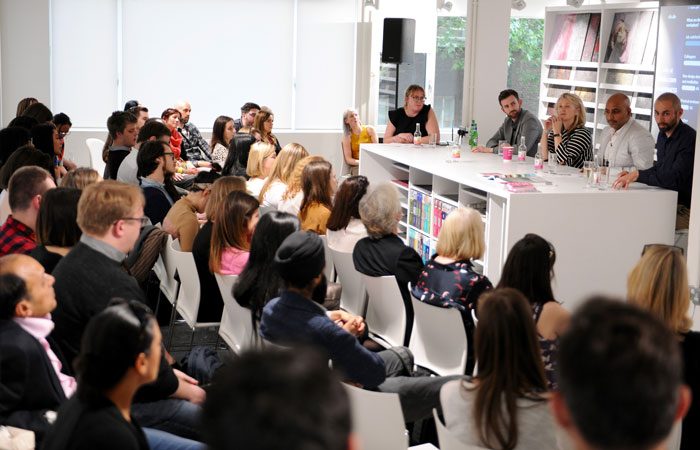HAPPINESS – THE CATALYST FOR GOOD DESIGN?
Well-being is at the core of Milliken’s design ethos and in an attempt to understand how design can affect our physical and mental well-being the flooring designer and manufacturer commissioned architecture and interiors journalist Helen Parton to produce a report: “Happiness – The Catalyst for Good Design.” The findings are based on a collaboration between Milliken and the Happiness Index during Clerkenwell Design Week using innovative and experimental ways to gather opinions and sentiment. The objective was to establish whether good design in a workplace can make people happy and if so, how?
Read the report in full here.

The findings, shared in a report published September 2019, are based on qualitative and quantitive data from architects’ and designers’ responses, underpinned by content from an expert industry panel. The Happiness Index (an organisation that analyses the cultural health of organisations) invited opinions from architects and designers using a ‘Happiness Booth’ at Milliken’s Berry Street showroom. Visitors’ responses were filmed, then sentiments and the feedback was collated, AI transcribed, analysed and segmented back into the Happiness Index’ platform.

Alongside this initiative a panel discussion was held in Milliken’s Clerkenwell showroom, also during Clerkenwell Design Week, featuring a range of thought-leaders, with whom Milliken has forged strong relationships. The panel consisted of Assael architect and founder of the Architects’ Mental Wellbeing Forum Ben Channon; Harley Street nutritionist, international speaker and seven times author Kate Cook; founder and Director or the Stress Management Society and best-selling author Neil Shah and Director of the ‘The Happiness Index’ Tim Stoller. During the panel debate the opinions of the audience were also gathered using the interactive polling platform Sli.do.

Based on an analysis of all the information report author Helen Parton identified five areas of particular significance. Firstly the importance of mental health in the workplace: Design can both positively and negatively affect our mental health. Also flexibility of space: Break-out spaces for all and designing spaces that cater for different personality types. Nutrition and exercise: Facilitating activity and exercise during the working day as well as enabling workers to eat healthily and away from their desks. Connection to nature: Planting or green walls, access to natural light, the use of natural materials and biophilic design (where patterns, colours and textures that are found in nature are replicated in some way in the built environment) can also have an impact. And last, but not least organisational culture: Need for cultural buy-in across the organisation and a strategic plan that is owned by the top level of management is essential.
Some key findings from the report:
• 80% of the panel audience believe design can be a catalyst for good design.
• Data from the Happiness Booth points to a direct correlation between happiness and design.
• Design alone cannot make us happy; respondents value job satisfaction and relationships with colleagues above all.
• Respondents, who came largely from the architecture and design sector, were on the higher scale of happiness in their jobs – 7.1/10 being the average figure.
Happiness Index co-founder Matthew Phelan sums up his take on the report’s findings, “Happiness is no longer seen as a fluffy metric and is now being baked into everything from design through to artificial intelligence. The results we see here are the start of a growing trend we see across the globe. The key to creating a thriving work culture is to design and build human centric workplaces.”
Contact Milliken through the BCFA Product Finder




